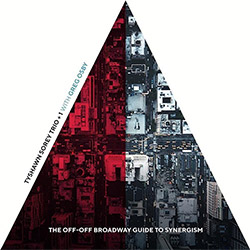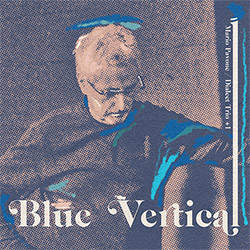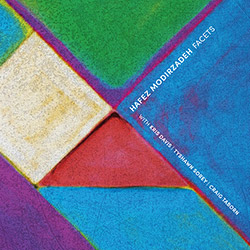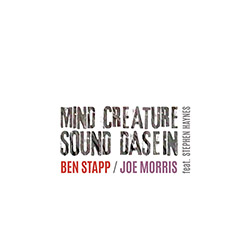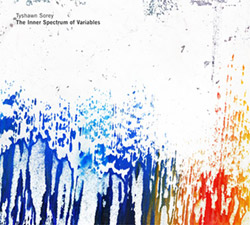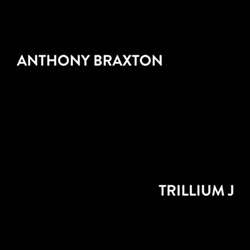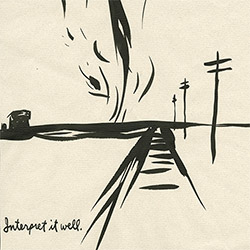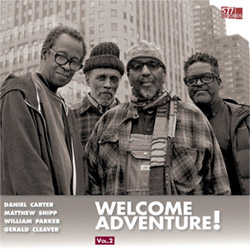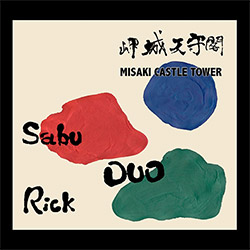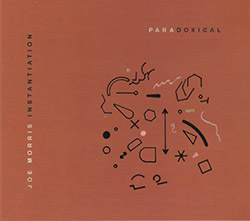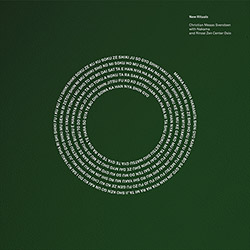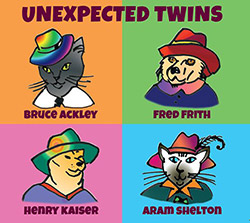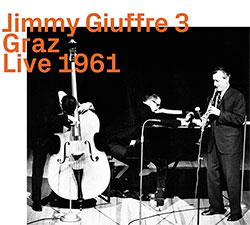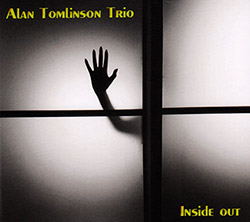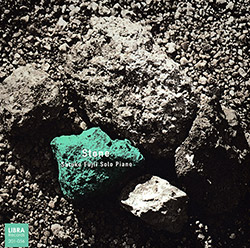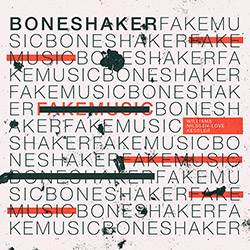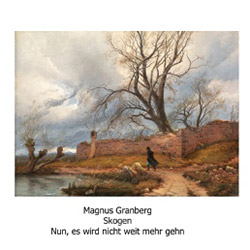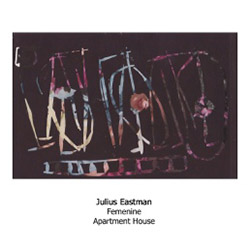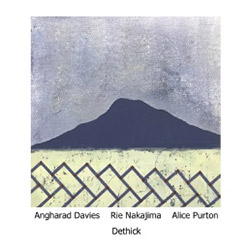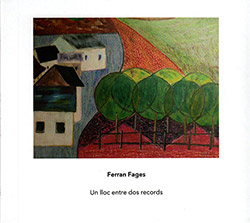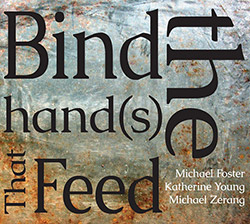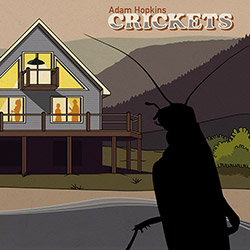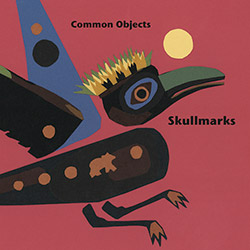![Sorey, Tyshawn : Pillars [3 CDs] (Firehouse 12 Records) Sorey, Tyshawn : Pillars [3 CDs] (Firehouse 12 Records)](https://www.teuthida.com/productImages/misc4/26559.jpg)
Drummer/percussionist, trombonist, pianist and importantly here, composer, Tyshawn Sorey in an amazing and ambitious work "Pillars", assembling an ensemble of virtuosic NY performers (Joe Morris, Todd Neufeld, Ben Gerstein, Stephen Hayes, Zach Rowden, Carl Test, Mark Helias) as he references Tibetan rituals, Stockhausen, and Anthony Braxton, and much more.
Out of Stock
Quantity in Basket: None
Log In to use our Wish List
Shipping Weight: 6.00 units
Sample The Album:
Stephen Haynes-trumpet, flugelhorn, cornet, alto horn, small percussion
Ben Gerstein-trombone, melodica
Todd Neufeld-electric and acoustic guitar
Joe Morris-electric guitar, double bass
Carl Testa-double bass, electronics
Mark Helias-double bass
Zach Rowden-double bass
Tyshawn Sorey-conductor, drum set, dungchen, percussion, trombone
Click an artist name above to see in-stock items for that artist.
UPC: 843563106020
Label: Firehouse 12 Records
Catalog ID: FH12-01-02-028
Squidco Product Code: 26559
Format: 3 CDs
Condition: New
Released: 2018
Country: USA
Packaging: Box Set - 3 CDs
Recorded on July 30th and 31st, 2017, by Greg DiCrosta.
"Renowned far and wide not only as a virtuoso multi-instrumentalist but as a composer-improviser of visionary gifts, Tyshawn Sorey presents his most ambitious recorded project to date with Pillars, a three-CD/two-LP epic that deals in ritual, drone and volatile atmosphere. Pillars is a triptych of seamless composition and improvisation, performed by a top-flight electro-acoustic octet featuring Sorey (conductor, drum set, percussion, trombone, dungchen) alongside Stephen Haynes (trumpet, flugelhorn, cornet, alto horn, small percussion), Ben Gerstein (trombone, melodica), Todd Neufeld (electric and acoustic guitars), Joe Morris (electric guitar, double-bass), Carl Testa (double-bass, electronics), Mark Helias (double-bass) and Zach Rowden (double-bass). The multivalent sound world of Pillars is beyond category, as inspired by Tibetan ceremonial music as by the extended avant-jazz rituals of Roscoe Mitchell; the African-American experimentalism of Bill Dixon, Butch Morris and Anthony Braxton have also been a keen influence on Sorey, as have been the disparate, trans-Atlantic modernisms of Morton Feldman and Karlheinz Stockhausen. As The New Yorker recently noted, Sorey is "among the most formidable denizens of the in-between zone... An extraordinary talent who can see across the entire musical landscape."-Firehouse 12
"Drummer and composer Tyshawn Sorey describes Pillars, his fascinating and ambitious new composition, with its references to Tibetan rituals, Stockhausen, and Anthony Braxton, in this way: "This isn't goal-oriented music-it has a gradually evolving, flowing quality. Different players lay out and join in as the piece evolves, and listeners can dip in and out of the record similarly." There are solo passage, duets, groupings, and re-groupings, all presented in a manner that leaves plenty of space. In fact, silence would seem to be among the significant instruments in Pillars.
This not to say there aren't recognizable musical lines and climaxes. The players include Stephen Haynes on trumpet and related instruments, Ben Gerstein on trombone and melodica, Todd Neufield and Joe Morris on guitars (Morris also appears on bass), and bassists Carl Testa, Mark Helias, and Zach Rowden. Sorey himself plays percussion, of course, but also some trombone and the Tibetan dungchen (It's yards long and looks like an inflated Alpine horn. It sounds like someone is moving furtniture). The band is bottom heavy: Sorey has a bass drum that must fill a room. (It will help mightily to have an audiophile's system when hearing Pillars.)
The truth is, I am can't stop listening to my downloads of the beautifully recorded three compact disc set. (There is also a two lp version that must be shortened version of the discs. The order of the sections are re-arranged as well on the lps.) Although Sorey's music "avoids a particular linear narrative," and is presented in three continuous sets of 75 or more minutes each, to my ears each set is organized around recognizable sections, with climaxes, variations in intensity, and various textures.
Clearly, Sorey is active as a conductor, cuing in new instruments and bringing sections to a close. Every instrumentalist tests the limits of his instrument: the basses are plucked, but also bowed to the point that they screech. One hears the full Jack Teagarden trombone sound, but also quacks and squeaks emitted by mouthpieces. There are electronic sounds and well, sounds I frankly can't identify. To my ears the music is entrancing yet intellectually stimulating. Listening to Sorey's music is like watching a complex game whose rules are constantly changing as we watch. Sorey suggests, or at least allows for, dipping into the music and leaving: I found each section ending before I knew it.
The composition begins with an almost four minute drum roll: Sorey's snare drum is set back in space. One hears a kind of metallic echo, but it is not a static moment. Sorey surges and recedes, finishing up with a kind of intense crescendo before he stops, suddenly. That's one of the distinctive qualities of this music: even what might have been uniformity are alive with change, even pulsation. There may be no (or few) written melodies, but what given material there is elaborated via melodic improvisations. In this case, after a pause, Sorey makes a quiet splash on cymbals and Todd Neufield enters, improvising quietly on acoustic guitar. The piece finally becomes a duet, with Sorey playing cymbals and lightly on tomtoms and bass drum behind his guitarist. At one point, Neufield plays so quietly he seems to disappear, and then Sorey takes over. Each note becomes a kind of event.
That's a characteristic of this music. It's not always quiet: there's a climax in the section between guitar and percussion at about 14 minutes, once the guitar has become agitated and then increasingly dissonant. The section seems to end at 16 minutes with a dramatic strum. And that's another fascinating characteristic of Sorey's music: the ending of one section becomes the beginning of the next - not seamlessly, but inventively. In this case, the next section begins with a series of strummed and bowed sounds with echo effects that make for a perfect logical progression from the strummed climax we just heard. Elsewhere, the dungchen is used to signal an ending, such as around minute 32 of the second set.
The last of the "Pillars," part three, is equally varied and interesting. Towards its end, the two horns play long tones in a continued diminuendo that slowly comes to a halt. Suddenly we hear what sounds like a lively set of bongos. Sorey is soloing wildly, and the horns and other instruments roar into a blaring group improvisation unlike any I have heard before. There is, in fact, little here that sounds like something I have heard before. Sorey flies far away from his innovative masters, Roscoe Mitchell and Anthony Braxton among them. I hardly expected that the result would be so mesmerizing and alive."-Michael Ullman, The Arts Fuse
Vinyl LP edition has a 4-part "Pillars IV" unique from the CD edition, and is available by clicking here.Get additional information at The Arts Fuse
Artist Biographies
• Show Bio for Stephen Haynes Stephen Haynes-trumpet: "I am an improvising composer, teaching artist, arts organizer and advocate; a product of the historic and fertile Black Music Division at Bennington College, directed by Bill Dixon. My early foundational studies were with the wonderful Frank Baird, who chaired the brass department at the University of Colorado's Boulder campus during the sixties and seventies. I currently lead several ensembles: Parrhesia (a trio w/Joe Morris and Warren Smith) and Pomegranate (a quintet with Ben Stapp, William Parker, Joe Morris and Warren Smith. My debut recording as a leader, Parrhesia, is on the Engine Studios label. With Joe Morris, I curate the long-running music series, Improvisations, at Real Art Ways. I am very concerned with the plight of the local artist in his/her hometown and region, and with the importance of well-developed support for those of us who enjoy working close to home and being treated properly. Over the years I have worked with a range of musicians, with a primary interest in large ensembles and composition: Bill Dixon, George Russell, LaMonte Young, Butch Morris, Rhys Chatham, Adam Rudolph, Leroy Jenkins, JD Parran, Gunter Hampel, Cecil Taylor and the Dells." ^ Hide Bio for Stephen Haynes • Show Bio for Ben Gerstein "Ben Gerstein is a trombonist and artist from Santa Barbara, California. Based in New York City since 1995, he collaborates with groups and individuals around the world. His music and works explore influences of nature, composition, culture and art through improvisation, performance, multi-instrumental and mixed-media practices." See also: http://bengerstein.com/index.html ^ Hide Bio for Ben Gerstein • Show Bio for Todd Neufeld "Todd Neufeld is an electric and acoustic guitarist, born August 5th, 1981 in Huntington, NY. Todd has performed and/or recorded as a member of the Lee Konitz Quartet,Masabumi Kikuchi's TPT Trio, Tyshawn Sorey's Koan, Oblique and other ensembles, Gerald Cleaver's NiMbNl,Dan Weiss Group, Tony Malaby Group, Samuel Blaser Quartet, Michael Adkins Quintet, Aaron Parks Quintet, Richie Barshay's RB3,Alexandra Grimal Quartet, Thomas Morgan Quartet, Rema Hasumi's UTAZATA band, Flin VanHemmen trio, Sergio Krakowski Trio, Vitor Goncavles quartet, Raphael Malfliet Trio and many others. He has performed at various venues, concert halls and festivals across New York, the United States,Canada, Europe and Japan. In 2015 Todd co-founded, with Rema Hasumi, Ruweh Records. For the label Todd has produced four albums to date.On September 25th, 2017 Todd released his debut album as a leader, "Mu'U" on Ruweh Records. The album featuresa unique and special two-drummer band of Tyshawn Sorey, Billy Mintz, with Thomas Morgan on bass and Rema Hasumu on vocals.The band explores a set of Neufeld originals and improvisations in a highly sensitive and dynamic exploration. Todd attended New York University in 1999, where he studied both English Literature and Music.It was at NYU that Todd began his study of classical composition and counterpoint.Throughout this and other periods Todd has benefited greatly from the private teachings ofJohn Quara, Joe Giglio, Chris Jentsch, Vanderlei Pereira, Bruce Arnold, Tony Moreno and Jeff Slatnick. Aside from performing, Todd teaches guitar and music to students in the New York area.Todd currently resides in Brooklyn, NY." ^ Hide Bio for Todd Neufeld • Show Bio for Joe Morris "Joe Morris was born in New Haven, Connecticut on September 13, 1955. At the age of 12 he took lessons on the trumpet for one year. He started on guitar in 1969 at the age of 14. He played his first professional gig later that year. With the exception of a few lessons he is self-taught. The influence of Jimi Hendrix and other guitarists of that period led him to concentrate on learning to play the blues. Soon thereafter his sister gave him a copy of John Coltrane's OM, which inspired him to learn about Jazz and New Music. From age 15 to 17 he attended The Unschool, a student-run alternative high school near the campus of Yale University in downtown New Haven. Taking advantage of the open learning style of the school he spent most of his time day and night playing music with other students, listening to ethnic folk, blues, jazz, and classical music on record at the public library and attending the various concerts and recitals on the Yale campus. He worked to establish his own voice on guitar in a free jazz context from the age of 17. Drawing on the influence of Coltrane, Miles Davis, Cecil Taylor,Thelonius Monk, Ornette Coleman as well as the AACM, BAG, and the many European improvisers of the '70s. Later he would draw influence from traditional West African string music, Messian, Ives, Eric Dolphy, Jimmy Lyons, Steve McCall and Fred Hopkins. After high school he performed in rock bands, rehearsed in jazz bands and played totally improvised music with friends until 1975 when he moved to Boston. Between 1975 and 1978 he was active on the Boston creative music scene as a soloist as well as in various groups from duos to large ensembles. He composed music for his first trio in 1977. In 1980 he traveled to Europe where he performed in Belgium and Holland. When he returned to Boston he helped to organize the Boston Improvisers Group (BIG) with other musicians. Over the next few years through various configurations BIG produced two festivals and many concerts. In 1981 he formed his own record company, Riti, and recorded his first LpWraparound with a trio featuring Sebastian Steinberg on bass and Laurence Cook on drums. Riti records released four more LPs and CDs before 1991. Also in 1981 he began what would be a six year collaboration with the multi-instrumentalist Lowell Davidson, performing with him in a trio and a duo. During the next few years in Boston he performed in groups which featured among others; Billy Bang, Andrew Cyrille, Peter Kowald, Joe McPhee, Malcolm Goldstein, Samm Bennett, Lawrence "Butch" Morris and Thurman Barker. Between 1987 and 1989 he lived in New York City where he performed at the Shuttle Theater, Club Chandelier, Visiones, Inroads, Greenwich House, etc. as well as performing with his trio at the first festival Tea and Comprovisation held at the Knitting Factory. In 1989 he returned to Boston. Between 1989 and 1993 he performed and recorded with his electric trio Sweatshop and electric quartet Racket Club. In 1994 he became the first guitarist to lead his own session in the twenty year history of Black Saint/Soulnote Records with the trio recording Symbolic Gesture. Since 1994 he has recorded for the labels ECM, Hat Hut, Leo, Incus, Okka Disc, Homestead, About Time, Knitting Factory Works, No More Records, AUM Fidelity and OmniTone and Avant. He has toured throughout the U.S., Canada and Europe as a solo and as a leader of a trio and a quartet. Since 1993 he has recorded and/or performed with among others; Matthew Shipp, William Parker, Joe and Mat Maneri, Rob Brown, Raphe Malik, Ivo Pearlman, Borah Bergman, Andrea Parkins, Whit Dickey, Ken Vandermark, DKV Trio, Karen Borca, Eugene Chadborne, Susie Ibarra, Hession/Wilkinson/Fell, Roy Campbell Jr., John Butcher, Aaly Trio, Hamid Drake, Fully Celebrated Orchestra and others. He began playing acoustic bass in 2000 and has since performed with cellist Daniel Levin, Whit Dickey and recorded with pianist Steve Lantner. He has lectured and conducted workshops trroughout the US and Europe. He is a former member of the faculty of Tufts University Extension College and is currently on the faculty at New England Conservatory in the jazz and improvisation department. He was nominated as Best Guitarist of the year 1998 and 2002 at the New York Jazz Awards." ^ Hide Bio for Joe Morris • Show Bio for Carl Testa "Carl Testa (b. 1984, Chicago, IL) is a multi-instrumentalist and composer at the intersection of improvised, electronic, experimental music, and new media. As a performer/improviser, he is equally comfortable on string bass, electronics, lighting, and combinations thereof. As a composer, he has written acoustic and electronic music for configurations ranging from solo to chamber orchestra, including multimedia pieces that incorporate electronics, lighting, dance, and theater. His work has been performed throughout the US and Europe, and is documented on many recordings, most recently "Iris (for solo bass and electronics)" (Lockstep Records 2013), and "Sⁿ (for prepared guitar and electronics)", a collaboration with guitarist Christopher Riggs (Gold Bolus Records 2015). In addition to his work as a leader/collaborator, he performs regularly with composers Anthony Braxton, Mario Pavone, and Tyshawn Sorey. He serves as the Director of Publishing and Creative Technology for Braxton's Tri-Centric Foundation where he manages all facets of the production of digital and print scores for the organization. He is the production manager for noted jazz venue and record label Firehouse 12. He also organized The Uncertainty Music Series from 2007-2017, which was a monthly concert series in New Haven, CT featuring improvised, electronic, and experimental music. He has received support from the State of CT as a 2018 Artist Fellow, from the New Haven Department of Cultural Affairs, and from NewMusicUSA. He lives in New Haven with his wife, vocalist Anne Rhodes, and their son, Florian." ^ Hide Bio for Carl Testa • Show Bio for Mark Helias "Mark Helias is a renowned bassist, composer and producer who has performed throughout the world for more than four decades with some of the most important and innovative musicians in Jazz and Improvised Music including Don Cherry, Edward Blackwell, Anthony Davis, Dewey Redman, Anthony Braxton, Abbey Lincoln, Cecil Taylor, and Uri Caine among many others. A prolific composer, Helias has written music for two feature films as well as chamber pieces and works for large ensemble and big band. His orchestra piece "Stochasm" was premiered by the American Composers Orchestra in June of 2011. Twelve recordings of his music have been released since 1984, his latest being "The Signal Maker" on the Intakt label. He teaches at Sarah Lawrence College, and SIM (School for Improvisational Music) in Brookyn, NY." ^ Hide Bio for Mark Helias • Show Bio for Zach Rowden Zach Rowden is a bassist and violinist from Richmond, Virginia now living in New Haven, Connecticut who works at Tri-Centric Foundation. He studied at University of Hartford. He is known for the group Tongue Depressor with Henry Birdsey. ^ Hide Bio for Zach Rowden • Show Bio for Tyshawn Sorey "Tyshawn Sorey (born July 8, 1980 in Newark, New Jersey) is an American musician and composer who plays drum set, percussion, trombone and piano. Since graduating from William Paterson University, Sorey has been a sought-after musician in many different musical idioms. He is both a performer and composer, and has had works reviewed in The Wire, The New York Times, The Village Voice, Modern Drummer and Down Beat. In August 2009, Sorey was given the opportunity to curate a month of performances at the Stone, a New York performance space owned by John Zorn. He was selected as an Other Minds 17 (2012). Sorey recently completed a Master of Arts in composition at Wesleyan University in Middletown, Connecticut. In the fall of 2011, he began pursuing doctoral work in composition at Columbia University. To date, Sorey has released four albums as a leader: That/Not (2007, Firehouse 12 Records), Koan (2009, 482 Music), Oblique (2011, Pi Recordings) and Alloy (2014, Pi Recordings). He has recorded or performed with musicians including Wadada Leo Smith, Steve Coleman, Anthony Braxton, John Zorn, Steve Lehman, Joey Baron, Muhal Richard Abrams, Pete Robbins, Vijay Iyer, Dave Douglas, Butch Morris and Sylvie Courvoisier, among many others." ^ Hide Bio for Tyshawn Sorey
4/22/2024
Have a better biography or biography source? Please Contact Us so that we can update this biography.
4/22/2024
Have a better biography or biography source? Please Contact Us so that we can update this biography.
4/22/2024
Have a better biography or biography source? Please Contact Us so that we can update this biography.
4/22/2024
Have a better biography or biography source? Please Contact Us so that we can update this biography.
4/22/2024
Have a better biography or biography source? Please Contact Us so that we can update this biography.
4/22/2024
Have a better biography or biography source? Please Contact Us so that we can update this biography.
Have a better biography or biography source? Please Contact Us so that we can update this biography.
4/22/2024
Have a better biography or biography source? Please Contact Us so that we can update this biography.
Track Listing:
CD1
1. Pillars I 01:17:15
CD2
1. Pillars II
CD3
1. Pillars III
Improvised Music
Jazz
Free Improvisation
Electro-Acoustic
Electro-Acoustic Improv
NY Downtown & Metropolitan Jazz/Improv
Octet Recordings
Staff Picks & Recommended Items
Top Sellers for 2018 by Customer Sales
Search for other titles on the label:
Firehouse 12 Records.


![Sorey, Tyshawn : Pillars [3 CDs] (Firehouse 12 Records) Sorey, Tyshawn : Pillars [3 CDs] (Firehouse 12 Records)](https://www.teuthida.com/productImages/full/26559.Full.jpg)
